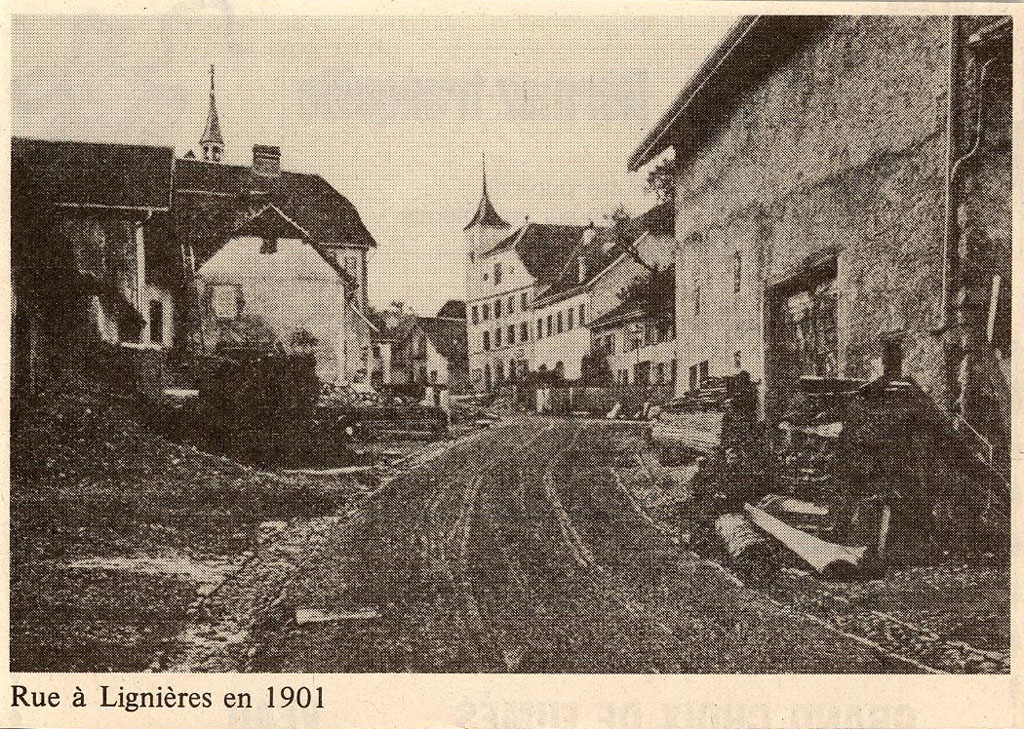

|
Lignières: Then and Now |
|
Click image for contemporary view.

The historical photograph is courtesy of M. Werner Löffel of Lignières, who kindly contributed images of his post card collection to the archives of the Fondation de l'Hôtel de Commune de Lignières.
|
by John Walker May, 2007 |
|
Walking along the Rue du Franc-Alleu from the fromagerie toward the centre of the village, we come around a bend and see the Hôtel de Commune (Place du Régent 2, RACN 010-6456-00064) with its distinctive tower at the end of the street. To the left, the more spindly bell tower of what was then the schoolhouse and is now the Maison de Commune (Place du Régent 1, RACN 010-6456-00076) peeks above the peak of the roof in the “then” picture. This distinctive landmark is no more, and only the air raid siren (against a contingency few envisioned when the “then” picture was taken in 1901) pierces the skyline today.
The building in the foreground at the right (Rue du Franc-Alleu 7, RACN 010-6456-00033), like most of those in this picture, was spared by the fire of 1832. Only the barn (now converted into a dwelling) is visible from this location; the attached farm house is out of the frame to the right. One of the buildings on the left side of the street, mostly out of view in the “now” picture behind the blockish light pink structure, has a lintel above the door which appears to bear the date 1709. Unambiguously dated is the remarkable fountain (RACN 010-6456-00218) just visible beyond the former barn in the right foreground of the “now” picture (it's in the “then” picture as well if you really know what you're looking for—just a corner can be seen beyond the woodpile).
This fountain, with the date 1750 and compass symbol of Lignières carved in the side (see the inset enlargement in the upper right of the above picture), was fashioned from a single slab of locally-quarried Jura limestone, transported into the village by being rolled on logs. The catch basin and pillar with the water spout are of cement and appear to be of recent construction.